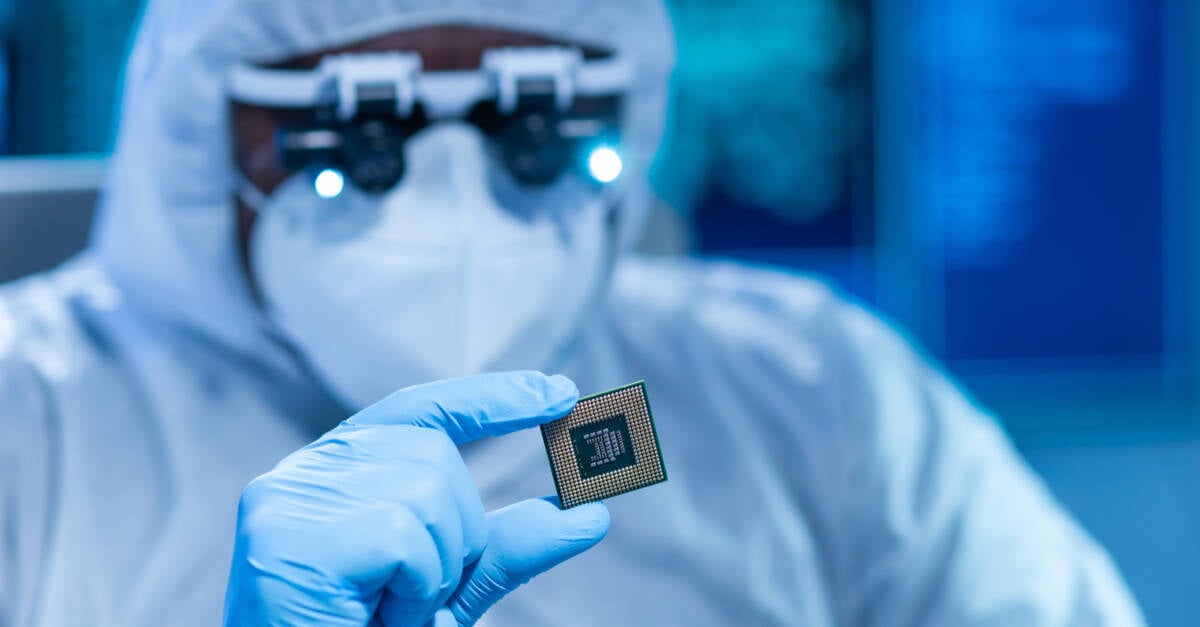
By now, you likely know the story: Intel made major manufacturing missteps over the past several years, giving rivals like AMD a major advantage, and now the x86 giant is in the midst of an ambitious five-year plan to regain its chip-making mojo.
This week, Intel is expected to detail just how it's going to make chips in the near future that are faster, less costly and more reliable from a manufacturing standpoint at the 2022 IEEE Symposium on VLSI Technology and Circuits, which begins on Monday. The Register and other media outlets were given a sneak peek in a briefing last week.
The details surround Intel 4, the manufacturing node previously known as the chipmaker's 7nm process. Intel plans to use the node for products entering the market next year, which includes the compute tiles for the Meteor Lake CPUs for PCs and the Granite Rapids server chips.
Intel has previously promised that Intel 4 will deliver a 20 percent improvement in performance-per-watt over Intel 7, the node previously known as the company's 10nm Enhanced SuperFin that powers Alder Lake client CPUs and the recently delayed Sapphire Rapids server chips.
In the briefing, Ben Sell, the executive in charge of Intel 4 development, said the node is progressing well and that his team has been able to achieve a roughly 21.5 percent in performance improvement for Intel 4 over Intel 7 at the same power. Conversely, Intel 4 can provide the same frequency level as Intel 7 using 40 percent less power.
This means that future chips like Meteor Lake will not only have better performance, which we always hope for with new chips, but also better efficiency. Improved efficiency can make a big difference in reducing the power a PC or server requires or improving how long a laptop battery lasts.
"The progress on Intel 4, it's very positive. It's right where we want to be," said Sell, whose title is vice president of technology development.
One advancement Sell's team made to boost the frequency of Intel 4 is a 2x increase of the capacitance of the metal-insulator-metal capacitor, which is a building block Intel has used for chips since the 14nm process that debuted in 2014 with the Broadwell CPU.
Increased capacitance results in fewer large voltage swings, which, in turn, increases the available voltage to the CPU and allows it to run at a higher frequency, according to Sell.
"What we have seen on products is that, overall, this translates to a higher frequency that you can run the product at," he said.
Back to basics
While improving performance is paramount for a new manufacturing node, reducing the costs and making the chip-making process more reliable are also important. On these points, Sell said his team has made good progress thanks to Intel 4's use of EUV lithography, an advanced process that uses extreme ultraviolet light to etch a chip design onto silicon.
Compared to the immersion process that Intel has used for previous nodes, EUV has allowed Intel to simplify the lithography process, according to Sell. In practice, this means Intel can reduce the number of layers required to etch chip designs onto silicon wafers from five to one.
"Everything now can be printed with a single layer to give you exactly the same structure," he said.
Using EUV also results in improved manufacturing yield, which means that the number of wafers with defects will go down when new chips enter production, Sell told us.
The other benefit of EUV is that it will lower Intel's chip-making costs for products using Intel 4, even though using EUV is expensive. This is because EUV reduces the number of steps and the number of tools needed to make chips, according to Sell.
"There are many other tools outside of the lithography tools that we have in our factory and a lot of those are also not needed once you combine everything to a single step," he said.
This simplified process could allow Intel to increase its production capacity, he opined.
"That means you also get a lot less demand in terms of cleanroom space that you need. So overall, either you need to build fewer fabs, or you can get more output of each fab," Sell said.
These and other process improvements represent a more modular approach Intel is taking to how it develops new nodes. This is a big change from the more aggressive approach the chipmaker previously used to develop nodes, which is what led Intel to suffer major missteps and delays with the 10nm and 7nm nodes over the last several years.
"The main thing that we're doing now is we're going into a much more modular development approach, which means rather than having one giant step, you have a few smaller steps and a few modules in the process that you can develop separately. This makes it a lot easier to get each module developed in time, without the complexity of having everything else solved to understand this module," Sell said. ®
"chips" - Google News
June 13, 2022 at 09:00AM
https://ift.tt/XxjTLzZ
Intel details advances to make upcoming chips faster, less costly - The Register
"chips" - Google News
https://ift.tt/TPs89kJ
https://ift.tt/l2pWytz
Bagikan Berita Ini















0 Response to "Intel details advances to make upcoming chips faster, less costly - The Register"
Post a Comment